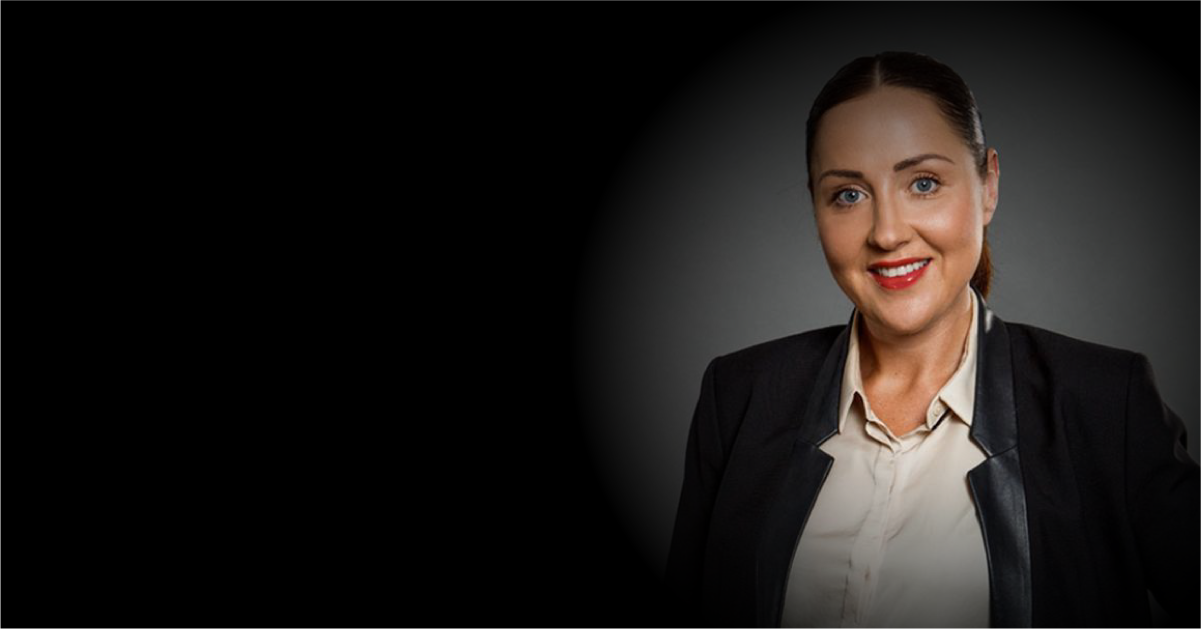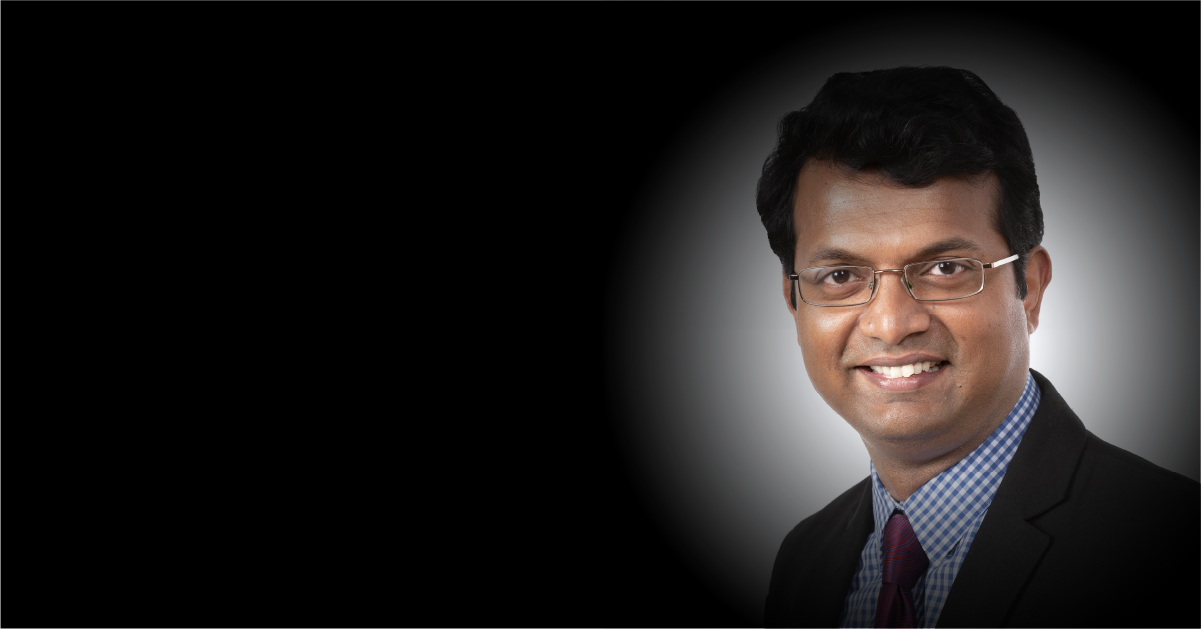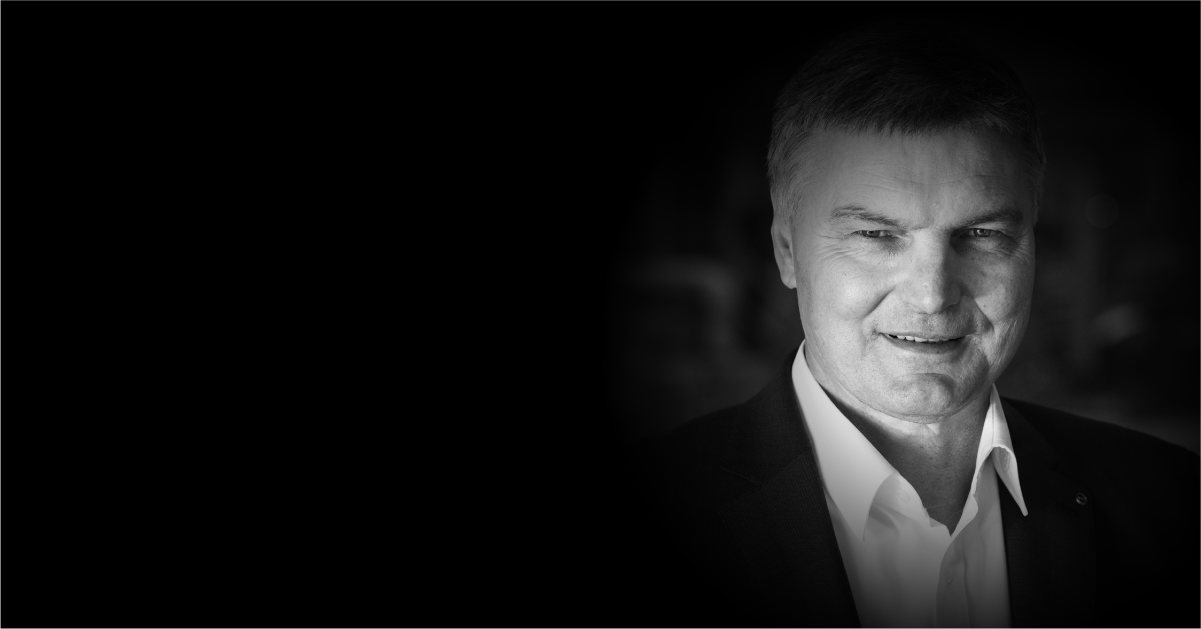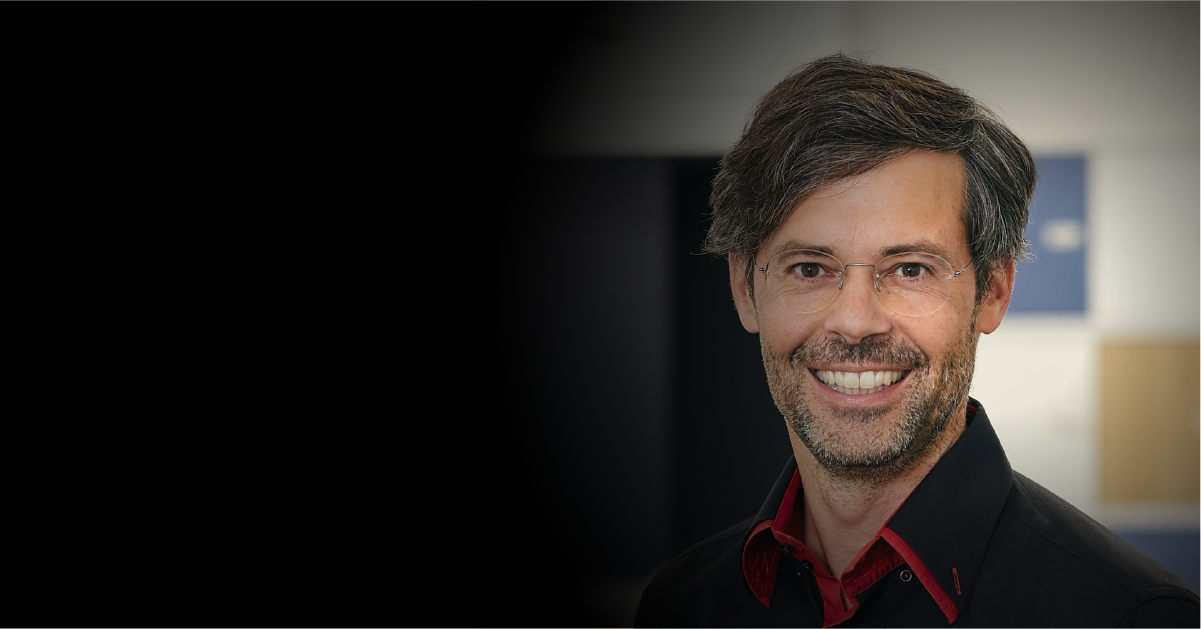Johann Hofmann, Founder von ValueFactoring® bei MR Maschinenfabrik Reinhausen GmbH zählt mit über 30 Jahren Berufserfahrung als Experte im Bereich Industrie 4.0 und Digitalisierung. Schon zu Beginn seiner Karriere hat er für sein Unternehmen den digitalen Weg bereitet und ein Assistenzsystem für die digitale Hochleistungsfertigung entwickelt, für das er mit dem Industrie 4.0 Award ausgezeichnet wurde.
Der charismatische Maschineningenieur hilft heute EntscheidungsträgerInnen dabei, Sicherheit und Know-how rund um Digitalisierung und Industrie 4.0 zu erhalten. In diesem Interview zeigt er uns auf, wie der Stand im Smart Manufacturing heute in Deutschland ist und wo es noch Verbesserungsbedarf gibt.
New Normal in der Industrie 4.0
Wie hat der aktuelle Normalzustand, das „New Normal“, die Aussichten für Industrie 4.0 verändert? Sind die Hersteller auf dem richtigen Weg in Bezug auf die nötige Digitalisierung?
Es geht um Hersteller von vernetzungsfähigen Produkten. Die Werkzeugmaschine oder der Werkzeugschrank ist zum Beispiel ein vernetzungsfähiges Produkt. Diese Produkte sind auch als Assets im Sinne von Industrie 4.0 bekannt. Und ebendiese Assets müssen zu Industrie 4.0 Komponenten werden, damit das Ganze funktioniert.
Dazu braucht jedes Asset eine Verwaltungsschale. Die Verwaltungsschale ist im Prinzip Teil des Digital Twins (Digitaler Zwilling). Damit wird die Vernetzung vereinfacht, so dass wir von diesem „Gefrickel“ wegkommen, das beim Vernetzen von Dingen oftmals entsteht.
Beim Drucker hat das ja wunderbar funktioniert. Wenn wir heute unter Windows 10 einen neuen Drucker installieren, steckt man den ein und der installiert sich von selbst. So etwas stelle ich mir auch bei Werkzeugmaschinen vor. Doch dazu müssen die Hersteller von diesen vernetzungsfähigen Produkten eine Industrie 4.0 Komponente ausliefern, also nicht nur das Produkt selbst, sondern auch den digitalen Zwilling, wie die Verwaltungsschale. Dann sind sie auf dem richtigen Weg.
Veränderungen durch das New Normal
Hat das New Normal, dieser neue Normalzustand, in den letzten Monaten viel verändert oder war das von Anfang an Thematik?
Worüber ich eben gesprochen habe, ist nicht die Wirklichkeit, sondern eine Wunschvorstellung. Das muss sich erst Schritt für Schritt über alle Asset-Hersteller ergeben. Die Hersteller von vernetzungsfähigen Produkten halten sich aktuell zurück, weil es noch keine Software gibt, die damit umgehen kann. Gleichzeitig halten sich die Software-Hersteller zurück, weil es noch keine vernetzungsfähigen Produkte gibt, die eine Verwaltungsschale mitbringen.
Da muss die Industrie 4.0 Plattform noch richtig Druck auf die gesamten Hersteller ausüben und ein Regelwerk kreieren, damit das in Gang kommt. Dieser „Normalzustand“ ist also noch nicht da, ist aber ein „gewünschter“ Normalzustand irgendwann in der Zukunft.
Wie fortgeschritten ist dieser Plan denn schon? Kannst du uns eine Einschätzung geben?
Das ist branchenabhängig. Unterschiedliche Branchen sind also unterschiedlich weit. Und ich habe das Gefühl, dass die Branche, in der ich unterwegs bin, die diskrete Fertigung, am weitesten hinterher hinkt. Aber das ist nur eine persönliche Einschätzung (lacht).
Wünschen Sie sich weitere aufschlussreiche Diskussionen? Treffen Sie Johann Hofmann und andere BranchenexpertInnen auf unserer nächsten Veranstaltung IndustryForum Smart Manufacturing.
Zukunftsausblick: Augmented Reality, Wearables und Cloud
Gibt es andere aufstrebende Technologien, die Hersteller im Auge behalten sollten? Welche Herausforderung gibt es bei der Einführung solcher Technologien?
Da fallen mir auf einen Schlag drei Technologien ein. Zum einen wären das die Datenbrillen, also Augmented Reality über Datenbrillen. Diese Technologie kränkelt aber ein bisschen. Wir hatten vor Jahren schon mal einen Versuchsballon zum Umrüsten von Maschinen über eine digitale Brille gestartet, bei der man den Arbeitsraum dann digital sieht. Das lief jedoch noch nicht ganz reibungslos, deshalb wurde das Projekt erstmal auf Eis gelegt. Trotzdem habe ich dahingehend eine große Erwartungshaltung. Mit jeder neuen Version einer Datenbrille wird es sicherlich besser und umfangreicher.
Überholt werden könnte diese Technologie von Wearables, also am Körper tragbare Computer, wie beispielsweise eine Smart Watch oder Datenhandschuhe. Hier wird sicherlich eine Zeit kommen, bei der der Meister durch eine Fertigungshalle läuft, dabei auf seiner digitalen Uhr Informationen von einer Werkzeugmaschine bekommt, die gerade irgendein Problem hat. Das wird bestimmt Standard in der Zukunft werden.
Die dritte Technologie ist die Cloud. Vor Jahren war ich ein größerer Fan der Cloud. Das hat jetzt ein bisschen abgeflacht, weil all unsere Kunden in der Fertigungsbranche Angst vor der Cloud haben. Doch das Thema sollte unbedingt weiterverfolgt werden. Es gibt Branchen, die sind komplett in der Cloud, zum Beispiel Amazon. Aber genau in unserer Branche hinkt man da ein bisschen hinterher, wir müssen aber am Ball bleiben.
Die Wichtigkeit von Digital Twins im Smart Manufacturing
Der Digital Twin ist bei den Herstellern immer beliebter geworden um mit Start-Ups wie Tesla Schritt zu halten. Wie sollten ältere, alteingesessene Fabriken die Einführung eines Digital Twins angehen?
Aus der Sicht des Anwenders ist die Frage einfach zu beantworten. Wenn eine Fabrik etwa eine neue Maschine, einen Werkzeugschrank oder ein anderes Produkt bestellt, sollte sie vom Hersteller einen Digital Twin fordern. Es soll also nicht nur die Maschine, sondern auch der digitale Zwilling geliefert werden.
Und das kann ich vom Hersteller verlangen, da ich als Käufer auch eine gewisse Macht habe. Wenn ich diese Macht nutze, dann werden alle Hersteller mit der Zeit ganz sachte dazu gezwungen, den digitalen Zwilling zu liefern. Und daran scheitert es ja momentan. Dazu fällt mir ein Beispiel ein:
Vor ca. 15 Jahren, als ich die Werkzeugdatenbanken aufgebaut habe, hatten wir kein Bild bzw. eine Grafik dazu. Wir mussten nebenbei Studenten beschäftigen, die uns die Grafiken für die Werkzeuge gezeichnet haben. Damals habe ich unseren Einkäufer also darum gebeten, bei jedem Kauf in den SAP Datensatz reinzuschreiben, dass das Werkzeug UND eine Grafik geliefert werden müssen. Wenn eines davon nicht geliefert werden sollte, zahlen wir auch nicht.
Natürlich war das damals in der Werkzeugbranche erst einmal ein Riesenaufschrei, ist heute aber Standard. Wer heute ein Werkzeug kauft, bekommt selbstredend eine Grafik dazu. Jeder der also Produkte kauft, kann beim Hersteller Druck aufbauen. Jetzt jedoch müssen wir nicht nach der Grafik verlangen, sondern nach dem Digital Twin. Wenn das jeder fordert, kann man sich den Zugzwang ausmalen, der plötzlich bei den Herstellern herrschen würde.
Das fehlt also noch. Aber ist es auch umsetzbar und realistisch?
(Lacht) Wir müssen das halt erst einmal probieren. Es gibt ja viele Hersteller, die bereits einen Digitalen Twin liefern, aber teilweise noch nicht vollständig. Die Industrie ist da auf jeden Fall auf einem guten Weg, aber eben noch nicht am Ziel. Um dieses Ziel jedoch schneller zu erreichen, können Einkäufer diesen Druck bei den Herstellern aufbauen.
Die fünf Naturgesetze der Digitalisierung
Was sind die größten Herausforderungen für Fabriken bei der Anwendung von Digital Twins als Teil ihrer bestehenden Prozesse? Was können Hersteller tun, um diese Herausforderungen zu meistern?
Ich beschäftige mich mittlerweile seit 33 Jahren mit der Digitalisierung. Dabei haben sich immer die gleichen Herausforderungen herauskristallisiert. Wenn ein Projekt gekränkelt hat oder gescheitert ist, war das immer eine von fünf Herausforderungen, die nicht vernünftig angepackt worden ist. Diese fünf Herausforderungen nenne ich die „fünf Naturgesetze der Digitalisierung“. Diese muss man abarbeiten, damit solche Projekte auch gelingen können.
Das erste Naturgesetz ist: Menschen mitnehmen. Klingt erst einmal ganz banal, aber wenn die MitarbeiterInnen nicht wollen, wird das Projekt immer scheitern. Man muss Menschen also von dem Projekt begeistern. Da gibt es eine Metapher, die man vor allem auf Konferenzen häufig hört: Wenn du ein Schiff bauen willst, erzähl den Leuten nicht, was sie alles für den Bau benötigen. Erzähle ihnen nur von der Schönheit des Meeres. Dann wirst du auch das beste Boot bekommen, das du dir vorstellen kannst.
Das zweite Naturgesetz ist: Wenn man einen schlechten analogen Prozess digitalisiert, dann bekommt man einen noch schlechteren digitalen Prozess. Analoge Prozesse müssen also schon vorher schlank und einfach gemacht werden. Dazu eignen sich LEAN-Methoden hervorragend. Also LEAN einführen und leben, das ist das zweite Naturgesetz der Digitalisierung und somit auch eine Herausforderung.
Das dritte Naturgesetz sind Stammdaten. Viele Projekte scheitern an unvollständigen Stammdaten. Diese müssen vollständig und fehlerfrei sein. Wenn du beispielsweise mit einem Navigationssystem durch Deutschland fährst, dann sind die Landkarten die Stammdaten. Wenn ich nun in ein neues Industriegebiet fahre, und mein Navi diese neue Landkarte noch nicht kennt, dann fehlen mir hier die Stammdaten.
Das vierte Naturgesetz ist: Die Konnektivität im Brown-Field herstellen. Wir leben und arbeiten ja alle in einem Brown-Field. Green-Field wäre eine nagelneue Fabrik mit nagelneuen Maschinen und Werkzeugen. Doch das hat keiner. Wir alle haben einen historisch gewachsenen Maschinenpark. Wir haben also einen maschinellen Zoo an unterschiedlichen Maschinen, die 24 Stunden am Tag und 365 Tage im Jahr stabil vernetzt sein müssen. Wenn ich diese Konnektivität nicht erreichen kann, kann ich alles andere auch nicht schaffen.
Das fünfte Naturgesetz ist: Offene Ökosysteme. In unserer Branche soll man nicht nach einer eierlegenden Wollmilchsau suchen, denn die ist Illusion. Die Lösung sieht so aus: Die digitale Fabrik besteht aus verschiedenen, eigenständigen Öko-Systemen, in deren Zentrum ein planendes META – System sitzt, Stand heute ist das das ERP System. Unterhalb dieser META Ebene befinden sich die jeweiligen ÖKO Systeme mit ihren domänenspezifischen Abläufen und Prozessen. Wie z.B. eine Feinsteuerung, ein Warehouse System, ein CAQ System, ein PLM System, ein Shopfloor System, etc. Die Interoperabilität dieser Systeme ist dabei ein entscheidendes Kriterium für deren Auswahl. Die richtige Orchestrierung der einzelnen Ökosysteme bringt den echten Mehrwert der Digitalisierung.
Das sind die fünf Herausforderungen, die man erst einmal meistern muss, bevor man überhaupt mit der KI den nächsten großen Sprung machen kann. Ohne das bringt auch ein Digital Twin nichts. Wenn es dafür keine Basis gibt, dann ist der Digital Twin auf verlorenem Posten.
Nachhaltigkeit in der Industrie 4.0
Aufgrund von Megatrends, wie dem Klimawandel, ist die Nachhaltigkeit für die Infrastruktur von größter Bedeutung. Welche wichtigen Änderungen nehmen Hersteller vor, um mit den Nachhaltigkeits-Vorschriften Schritt zu halten?
(Lacht) Jetzt hast du ein Riesenthema aufgemacht. Was heißt denn Nachhaltigkeit überhaupt? „Die natürliche Regenerationsfähigkeit der beteiligten Systeme gewährleisten“. Am Beispiel der Forstwirtschaft heißt das etwa, nicht mehr Holz zu fällen als nachwachsen kann. Schneide ich einen Baum ab, muss ich einen Baum anpflanzen, der auch irgendwann abgeholzt werden kann. Das ist Nachhaltigkeit.
Aber was bedeutet das für uns in der Produktion? In den Produktionshallen würde das bedeuten, dass nicht mehr Rohstoffe verbraucht werden als Rohstoffe nachwachsen können, wie beispielsweise seltene Erden, Erdöl oder Eisenerz. Das geht aber nicht. Diese Aussage („geht nicht“) verwende ich äußerst selten. In diesem Fall hat das allerdings Millionen an Jahren gebraucht, um überhaupt zu entstehen. Die ganze Nachhaltigkeits-Thematik ist in der Fertigungsbranche also eher scheinheilig, weil es sowieso nicht geht.
Wir beuten die Erde aus, bis sie kollabiert. Punkt. Das ist das Problem, das wir alle auf diesem Planeten haben. Was sollen die Hersteller jetzt also machen, um einigermaßen etwas richtig zu machen?
Sie könnten in energieeffiziente Anlagen investieren, damit auch der CO2-Ausstoß reduziert wird. Auch könnten Reisezeiten minimiert werden. Durch die Coronavirus-Pandemie habe ich so viel Reisezeit eingespart, das kann man auch nach Corona noch beibehalten. Zudem sollte Home-Office – soweit möglich – auch nach der Pandemie ermöglicht werden. So wird jeden Tag der Weg ins Büro gespart, und damit auch Sprit.
Ein Beispiel: Manche fertigen ein goldenes Lenkrad mit Lenkradheizung, während andere einen Tesla bauen. Nicht das goldene Lenkrad sollte optimiert werden, sondern es sollte an den richtigen Stellen weiterentwickelt werden. Aber ob das Elektroauto für den Klimawandel wirklich so gut ist, ist eine völlig andere Diskussion.
Eine weitere Methode, die bei der Nachhaltigkeit helfen könnte, wäre die Just-in-Time-Produktion. In meinem Studium im Jahr 1989 wurde das sehr stark thematisiert. Hier heißt es: Das beste Lager ist kein Lager. Der beste Transport ist kein Transport. Es könnte also direkt in die Montage produziert werden, statt erst einmal ins Lager und von dort aus wieder weiter transportiert zu werden. Das ist zwar eine uralte Methode, aber die könnte durchaus nachhaltig sein.
Ist das eine realistische Methode? Setzen dies Hersteller vielleicht sogar schon um?
Die Automobilindustrie setzt das großartig um. Sitzhersteller zum Beispiel fahren ihre Sitze in kein Lager, sondern direkt an die Montagelinie im Autowerk und vor dort werden sie Just-In-Time montiert. So gut, wie das die Autoindustrie hinbekommt, bekommt das keine andere Branche hin. Da gibt es für unsere Branche noch viel Optimierungs-Potenzial.
Richtig auf die Zukunft vorbereiten
Inwiefern können Zukunftsszenarien EntscheidungsträgerInnen helfen, ihre Pläne zu verfeinern und Strategien zu entwickeln, um sich auf die Zukunft vorzubereiten?
Zukunftsszenarien helfen EntscheiderInnen immer nur dann, wenn sie die Zukunft auch richtig vorhergesagt haben. Sonst kann es sein, dass Pläne entstehen, die das Ganze nicht verfeinert, sondern ruiniert haben. Wenn ich von einem komplett falschen Szenario ausgehe, dann treffe ich ja die komplett falschen Entscheidungen.
Dazu fällt mir immer der Komiker Karl Valentin ein. Er hat folgendes gesagt: „Prognosen sind schwierig, besonders wenn sie die Zukunft betreffen“ (lacht).
Aber bei Zukunftsfragen kann ich trotzdem eine Hilfestellung geben, wie beispielsweise die fünf Naturgesetze der Digitalisierung. Diese haben sich über Jahrzehnte als Basis für richtige Entscheidungen bewährt und haben auch noch in der Zukunft Gültigkeit. Wenn man sich daran orientiert, kann man eigentlich keinen großen Fehler machen. Wenn Sie diesen QR-Code entschlüsseln, dann finden Sie dazu eine wertvolle Hilfestellung, in der meine Erkenntnisse aus 33 Jahren Digitalisierung komprimiert dargestellt werden:












